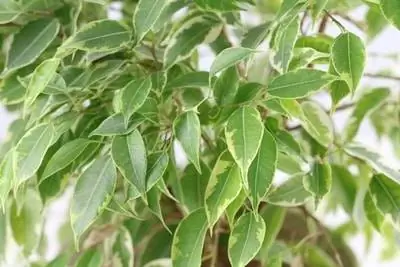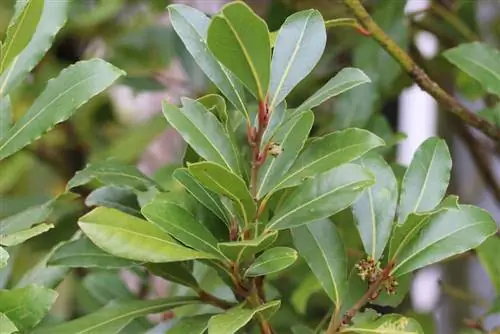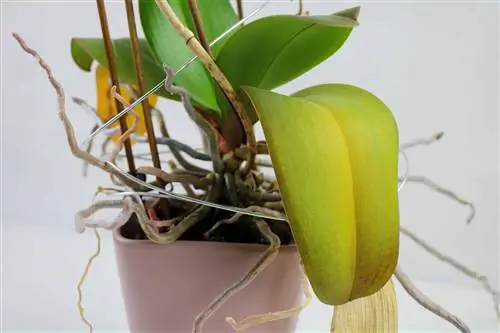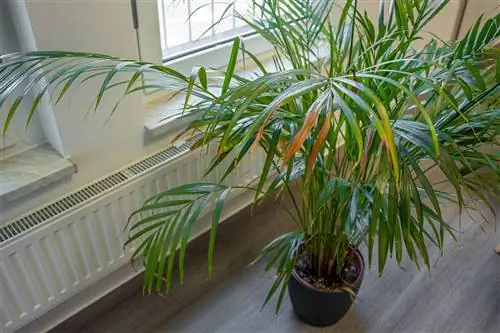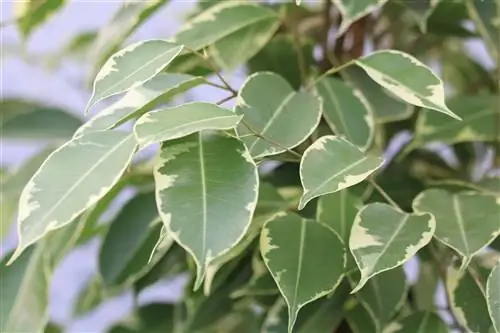- Author admin [email protected].
- Public 2023-12-17 03:39.
- Last modified 2025-01-24 12:45.
Ficus benjamina are found in every third or fourth German household, often much loved and just as often criticized because they behave less robustly than was expected from a birch fig. The critics are not always aware that they are dealing with a tropical birch fig that actually tolerates the shortcomings of the local climate with exemplary frugality. Below you will learn about the origin of the Ficus benjamina, with the resulting requirements for care and pruning that put an end to inexplicable leaf loss:
Profile
- Ficus benjamina belongs to the large genus of fig trees
- All of which developed in (sub)tropical regions
- The birch fig is a tropical plant, many of its owners are not aware of it
- Like every tropical plant, it has some indispensable requirements
- A great need for light
- First and most common cause of leaf fall in figs that are kept indoors all year round
- Indoor keeping with a summer stay on the balcony or keeping in the winter garden is better for the ficus
- The rest of the care also has to be right, but it is easier to influence
- Sufficient water and humidity, also from the spray bottle
- Moderate amounts of fertilizer and a new pot when the old one is rooted
- Pruning is not absolutely necessary, but it can produce amazing cultural forms
Location and light
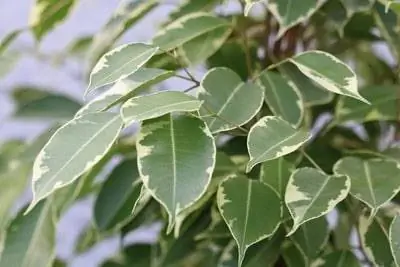
The Ficus benjamina, like all figs, is native to tropical and subtropical regions, which means for the location requirements as with any tropical plant:
The Ficus benjamina should be given one of the brightest locations available in its new home. All of our usual room temperatures (from approx. 18 to approx. 25 °C) are pleasant for the tropical plant; the ficus can even find its summer location on the balcony at average temperatures of approx. 15 °C (even at night).
You should definitely treat your Ficus benjamina to this outdoor summer location; without these “light showers” in our (still sparse compared to the tropics) summer light, most birch figs will probably weaken at some point. The summer location should be somewhat protected from the blazing midday sun and from heavy rain/storms.
Tip:
If you don't have a balcony or a terrace, the Ficus benjamina will only be happy with you in the long term if you place it under a plant light. The difference between a sufficiently lit ficus and a birch fig suffering from a lack of light is huge.
A birch fig in rather dry living spaces quickly has problems with the humidity being too low compared to its Asian homeland. You can make up for a lot with regular (whenever the surface of the potting soil is just dry) and careful (not too little and not too much) watering. If that's not enough because the Ficus benjamina is e.g. If, for example, you are “afflicted” with loss of leaf color or leaf fall, you could put it in the kitchen or bathroom for a while, where the humidity is higher. If these rooms are not bright enough, only (frequent) spraying will help if kept in the living room
Otherwise, the Ficus benjamina simply needs a bright location, preferably with morning and/or evening sun and also in full midday sun if it slowly gets used to it. In the house at a suitable window or (ideally) in a bright winter garden.
If the light only comes from one side, you should occasionally turn the Ficus benjamina a little because the leaves thrive better in the light and the plant could otherwise grow crooked.
Care and wintering
The location is the most important thing, the rest of the care is simple:
- Ficus benjamina thrives in any normal potting soil, in pot soil and in garden soil
- Actually in any substrate in which plants can grow
- It gets water regularly, whenever the surface of the soil in the pot has just dried out
- Hard water should stand out, otherwise it will cause limescale spots on the leaves
- The birch fig needs fertilizer about every 2 weeks during the growing season
- Ficus benjamina is not particularly hungry, ready-made green plant fertilizer in a weak to medium concentration is sufficient

In winter it depends:
- The Ficus benjamina can be cultivated through and is then treated as in summer
- Due to a cool location and limited supply, it can also be forced deeper into rest
- If the Ficus benjamina is on the balcony in summer, it is placed inside the house when the outside and inside temperatures are approximately the same
- If the roots take up the entire pot, the Ficus benjamina needs to be repotted
- Experience has shown that every two years, in the next larger pot and in new soil
Cutting
Ficus benjamina, like all figs, are incredibly easy to cut. They will sprout new growth even if you cut into the old wood, and probably even if you “saber down” the trunk almost to the ground.
Sabering down is e.g. For example, if the ficus on the dresser scratches the ceiling. With this limiting pruning you will usually only sacrifice the upper quarter or third of the trunk, which the birch fig tolerates uncritically.
More reasons to cut a ficus:
- Promoting branching, the young plant is pruned all around in spring
- Remove wilted, dry, diseased, broken shoots, possible at any time
- Putting the sprawling Ficus benjamina in its place
- Best in spring, on individual shoots whenever they bother you
- For shaping the ficus, in any direction and actually at any time
- Only the basic beginnings of a topiary should be done in spring
Propagation
Pruning=cuttings,since you cut shoot tips, they are all top cuttings that you can root very easily: put them in growing pots with growing soil, cover with foil to increase the humidity, a few Wait weeks (when the first new shoots appear at the top, roots have also grown).
Tip:
If you want to grow a lot of Ficus benjamina, you can also let the fig cuttings root in glasses of water. Figs are considered symbols of fertility and we alth because they sprout so readily.
Species and varieties
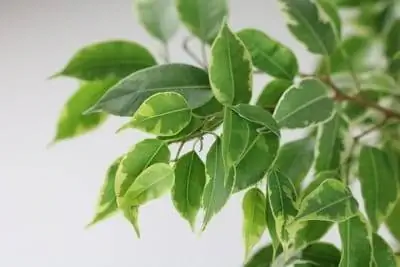
Ficus benjamina has been in cultivation for quite a long time, during which time some cultivars have emerged; Here are the most famous ones:
- Ficus benjamina, green natural form, awarded the “Award of Garden Merit” by the Royal Horticultural Society UK
- Ficus benjamina 'Variegata', first variegated variety
- Ficus benjamina 'Nastasja' grows with particularly small leaves
- Ficus benjamina 'Golden Princess', gold-cream variegated leaves
- Ficus benjamina 'Starlight', white variegated, Award of Garden Merit winner
Tip:
You are reading an article about Ficus benjamina, and the first person who looks over your shoulder while reading could tell you that this plant is called “Ficus benjamini” Don’t believe it, it only exists 50,000 times in search engines, who react to any nonsense for commercial reasons. Botanically, the plant has been called Ficus benjamina since Carl Linnaeus named it that way in 1767. You rarely need the correct botanical name because birch figs are often simply sold as ficus without a species or breeding name. But if you want to buy a very specific (variegated) ficus, it should be able to identify itself with all the names.
Birch fig loses leaves
The main accusation against the Ficus benjamina, but if there are only a few leaves, it could simply be nature. For a tropical plant grown in an environment with unfamiliar seasons and much less light than at home, most experts find occasional leaf loss to be fairly normal.
If there are a lot of leaves, you should start researching the causes; There are a few that may be considered:
- Lack of light, the ficus's photosynthesis only starts at a certain level of brightness
- If it is too dark, the leaves starve, especially quickly in the somewhat sensitive variegated cultivars
- Sunburn from suddenly full sun can destroy the leaves of the corresponding part of the plant
- Sick leaf drop can also be caused by too little/too much water, heat, fertilizer
- And of course from pests and diseases
- They particularly like to attack an already weakened Ficus benjamini

Otherwise, a Ficus benjamina doesn't particularly like heat accumulation (used air), wildly fluctuating temperatures, overzealous air conditioning and sudden changes of location to a completely different environment; especially when such impacts occur in close succession. Sometimes several care deficiencies that are harmless in themselves lead to leaf fall, and then investigating the cause becomes quite a detective task. If you check point by point and correct any problems you find as soon as you discover them, your Ficus benjamina will eventually be back in full foliage and in all its beauty.
Unknown Ficus benjamina: special ingredients and special forms of cultivation
The Ficus benjamina is valued because it brings decorative greenery to living spaces, which is fairly easy to maintain if the most important basic needs of the tropical plant are taken into account. The birch fig meets these requirements, but has many more remarkable properties and talents:
- The white milky sap of Ficus benjamina contains several secondary plant substances: flavonoids, furocoumarins, rubber
- These secondary plant substances have several different effects
- The milky juice has an antibacterial effect, an extract from the leaves is said to reduce rheumatism pain and swelling
- Ficus Benjamina is therefore said to be used as a medicinal plant in Asia
- The birch fig purifies the air
- Ficus Benjamina filters formaldehyde, xylene and toluene from the air
- According to the neurodermatitis portal jucknix.de, the birch fig is also one of our important allergy triggers
- A Ficus benjamina can be grown in some special cultivation forms because of its growth characteristics
- Topiaries with several round crowns are possible
- Ficus benjamina is also suitable for cultivation as a bonsai (choose one of the small-leaved varieties)
- Aerial roots of Ficus benjamina grow together under pressure
Tip:
Root weaving is one of the hottest trends in ornamental plants. Ficus benjamina forms aerial roots when kept in a humid environment, and of course it is not about growing a cottage, but about ornamental plants, which really not everyone has.

